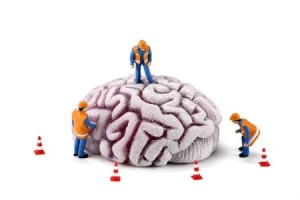Patients Deserve Better Than the DSM
Even before the fifth edition of the DSM was published in 2013 there were serious critiques of its reliability and validity. The then Director of the National Institute of Mental Health (NIMH), Thomas Insel, said it was at best, “a dictionary, creating a set of labels and defining each.” He went on to say its strength was its reliability, meaning it provided a way for clinicians to use the same terms in the same way. Its weakness was that it lacked validity. “Patients with mental disorders deserve better.” However, two weeks later, in a joint press release, Insel and the President-elect of the American Psychiatric Association, Jeffrey Lieberman, issued a statement. They said the NIMH had not changed its position on DSM-5. The DSM and the International Classification of Diseases-10 (ICD-10) remain “the contemporary consensus standard for how mental disorders are diagnosed and treated.”
The NIMH had developed a new research strategy to classify mental disorders based upon “dimensions of observable behavior and neurobiological measures,” known as Research Domain Criteria (RDoC). The project was to “transform diagnosis by incorporating genetics, imaging, cognitive science, and other levels of information to lay the foundation for a new classification system.” RDoC was described as the framework for collecting data to formulate a new nosology. Insel said they realized they could not succeed if they used DSM categories as the “gold standard,” so the NIMH would be “re-orienting its research away from DSM categories.” Yet Insel emphasized for now, RDoC was merely a research framework, not a clinical tool.
The situation has not changed much in the past six years. RDoC is still a research framework and the DSM-5 is still “the best information currently available for clinical diagnosis of mental disorders.” Dissatisfaction with the DSM-5 and perhaps some impatience with the promises of RDoC, led Jonathan Raskin, a psychology professor at SUNY New Paltz, to ask, “What Might an Alternative to the DSM Suitable for Psychotherapists Look Like?” Raskin has been previously critical of the DSM-5, co-authoring a previous article, “DSM-5: Do Psychologists Really Want an Alternative?”
In “What Might an Alternative to the DSM Suitable for Psychotherapists Look Like?” Raskin said there seemed to be an uneasy relationship between psychotherapists and the medical model of the DSM diagnostic system they use. While more than 90% of psychologists and counselors say they use the DSM-5 they also expressed support for the development of an alternative. Writing for Mad in America, Jessica Janze quoted him as saying:
By seeing human suffering as a function of broken brains, the DSM often overlooks the complex and mutually determining interplay of psychological, sociocultural, contextual, and biological factors … While the DSM does not completely ignore psychosocial factors, it typically treats them as extraneous variables that influence, but are distinct from, the presumed primary cause of emotional suffering: a dysfunction inside the individual.
Raskin was skeptical of RDoC, saying the approach was misguided, because “it may not be possible to diagnose and explain all forms of human suffering in terms of underlying biological processes.” This wasn’t to say biology was irrelevant. “Psychological, social, and contextual factors influence biology just as much as biology influences them.” An alternative manual should contain five elements:
- Psychosocial factors are placed on equal footing with biological factors;
- It must categorize problems, not people;
- It must be scientifically grounded;
- It must be collaboratively developed;
- It must be usable across orientations, professions, and constituencies.
In “Heterogeneity in Psychiatric Diagnostic Classification,” Allsopp, Read and Corcoran analyzed five key chapters of the DSM-5 on ‘schizophrenia’, ‘bipolar disorder’, ‘depressive disorders’, ‘anxiety disorders’ and ‘trauma-related disorders.’ It was created to provide a common diagnostic language for mental health professionals and provide a definitive list of mental health problems, along with their symptoms. But the authors found that the psychiatric diagnoses all used different decision-making rules to codify the respective lists and their symptoms. There was a significant overlap of symptoms between diagnoses. And they told little about the individual patient and what treatment they needed. Neuroscience & News Research said: “The authors conclude that diagnostic labeling represents ‘a disingenuous categorical system.’”
Kate Allsopp said while the diagnostic labels created the illusion of an explanation, “they are scientifically meaningless and can create stigma and prejudice.” She hoped their findings would encourage mental health professional to think beyond diagnoses and consider other explanation of mental distress. Peter Kinderman said the study provided more evidence the biomedical diagnostic approach in psychiatry is not fit for its purpose. “Diagnoses frequently and uncritically reported as ‘real illnesses’ are in fact made on the basis of internally inconsistent, confused and contradictory patterns of largely arbitrary criteria.” It seems to assume all distress results from disorder, and relied heavily on “subjective judgments about what is normal.” Professor John Read concluded: “Perhaps it is time we stopped pretending that medical-sounding labels contribute anything to our understanding of the complex causes of human distress or of what kind of help we need when distressed.”
The Superior Health Council of Belgium published “DSM(5): The Use and Status of Diagnosis and Mental Health Problems” in June of 2019. The Report said there were several problems with the DSM and ICD and they recommended both be used with caution. DSM categories should not be at the center of care planning. At a clinical level, classifications do not provide a picture of symptoms, nor do they help manage needs and prognosis, “because they lack validity, reliability and predictive power.”
From an epistemological point of view, classifications are based on the assumption that mental disorders occur naturally, and that their designations reflect objective distinctions between different problems, which is not the case. The boundaries between people with a disease and those who are free from it are more dimensional than categorical.
The Report recommended a “multi-layered” diagnostic process, starting with a narrative description of the individual’s symptoms. These symptoms should then be re-contexualized, classifying them on the basis of a limited number of general syndromes. And finally, they should discuss these symptoms in terms of a continuum from crisis to recovery in order to assess the need for care, the level of crisis and the recovery perspective. Diagnoses should remain as working hypotheses and DSM and ICD use should be limited to broader categories of disorders. “Disorders should not be considered as a static characteristic, but rather as interactive.” Diagnostic labels should be used with caution.
It seems psychiatry is facing another crisis like that which occurred in the 1970s with Rosenhan’s classic “Being Sane in Insane Places.” Critiques of the validity and reliability of the most recent edition of the DSM have not faded and seem to be gaining more credibility. The Superior Health Council of Belgium said the diagnostic labels of the DSM-5 lack predictive power and should be used with caution. Yet it is “the contemporary consensus standard for how mental disorders are diagnosed and treated.” Paraphrasing the words of Thomas Insel: “Patients with mental disorders deserve better” than the DSM.
For more on concerns with psychiatric diagnosis, the DSM-5 and RDoC on this website, try: “The Quest for Psychiatric Dragons, Part 1,” “The Quest for Psychiatric Dragons, Part 2,” “Psychiatry Has No Clothes” and “Psychiatry’s Mythical Phoenix.”





